Our Verdict
Gigabyte’s stunning Aorus Elite X870 WiFi7 Ice costs under $300, but will still turn heads thanks to its white design and superb feature set. This includes tool-free heatsinks, PCIe 5.0 SSD and GPU support, and other premium extras, such as Type-C USB 4 ports for added future proofing.
- Lots of USB ports
- Attractive white design
- Full PCIe 5.0 support
- Good VRM and M.2 cooling
- Fan header placement could be better
- Some M.2 ports steal GPU PCIe lanes
- B650 boards are cheaper and just as fast
If you want to build a clean white PC then you’ll need a motherboard that fits your color scheme too, and the Gigabyte Aorus Elite X870 WiFi7 Ice is one of several boards based on the X870 chipset to do so. It looks fantastic, but as it uses the X870 chipset as opposed to the more expensive X870E chipset, you still get premium features such as USB 4, Wi-Fi 7 and PCIe 5.0 M.2 and PCIe slots, but without the $500 price tag.
Of course, if you’re just looking for the best gaming motherboard and want to pair it with a Ryzen 7 9800X3D, there are plenty of other options, with those that use the older B650 chipset saving you even more money. However, Gigabyte is aiming this board at those who want cutting-edge features that will stand the test of time, such as Wi-Fi 7 and USB 4, in addition to its snazzy design. What’s more, this motherboard has larger heatsinks than many B650 and X670 boards, meaning you can add a PCIe 5.0 SSD without it getting too toasty.
Retailing for $290, the Gigabyte Aorus Elite X870 WiFi7 Ice is one of the more affordable motherboards to have been released since AMD’s Zen 5 Ryzen 9000 CPUs hit the shelves a few months ago.
While all Socket AM5 motherboards support Ryzen 7000 and 9000 CPUs, the new 800-series motherboards are designed with PCIe 5.0 SSDs and graphics cards in mind and include a range of improved tool-free features too. Gigabyte has also updated its EFI and software to make them more user-friendly, so we expect the Aorus Elite X870 WiFi7 Ice to be easy to install and set up, and not just a pretty face.
Why you can trust our advice ✔ At PCGamesN, our experts spend hours testing hardware and reviewing games and VPNs. We share honest, unbiased opinions to help you buy the best. Find out how we test.
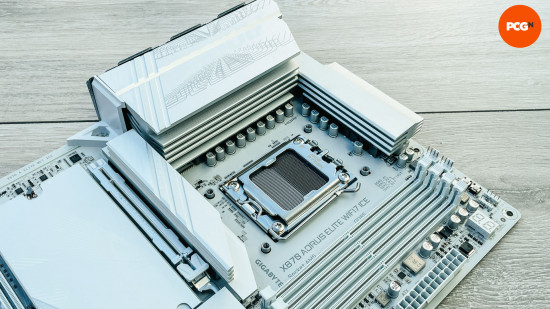
Specs
| Gigabyte Aorus Elite X870 WiFi7 Ice | |
| Dimensions | 305 x 244mm |
| Chipset | AMD X870 |
| CPU socket | AMD Socket AM5 |
| RAM support | 4 x DDR5 DIMM slots, max 256GB, up to 8,200MHz |
| Expansion slots | 1 x PCIe 5.0 16x, 1 x PCIe 4.0 16x, 1 x PCIe 3.0 16x |
| M.2 ports | 3 x M.2 PCIe 5.0 4x with heatsinks, 1 x M.2 PCIe 4.0 4x with heatsink |
| External USB ports | 4 x USB-A 2.0, 4 x USB-A 3.2 Gen 1, 2 x USB-A 3.2 Gen 2, 2 x USB-C 4 |
| Internal USB ports | 1 x USB-C 3.2 Gen 2×2, 1 x USB-A 3.2 Gen 1, 2 x USB-A 2.0 |
| Sound | Realtek ALC1220 |
| Networking | 1 x Realtek 2.5Gb/sec LAN, Wi-Fi 7, Bluetooth 5.4 |
| Fan headers | 8 x 4-pin |
| I/O panel | 2 x audio jacks, 1 x optical port, 1 x HDMI port, 1 x Q-Flash Plus button |
| RGB lighting | Chipset heatsink, 1 x 4-pin RGB, 3 x 3-pin ARGB |
| Extras | M.2 thermal pads |
Features
You might think all of Gigabyte’s budget for this motherboard has gone into the color scheme, but thankfully you’d be wrong. All four of the M.2 ports are tool-free and easy to remove and reinstall once you’ve added your SSDs. In fact, it’s a little easier to deal with Gigabyte’s heatsinks than those of other manufacturers we’ve seen recently too. However, only the top port above your graphics card is cooled above and below the drive, with the other three ports lacking the lower thermal pads you typically see on more expensive motherboards.
Due to the tightly-packed nature of the PCB and completely inaccessible graphics card locking latch, Gigabyte also includes a PCIe EZ-Latch Plus button for your graphics card. This opens the locking latch on the reinforced slot and is located next to the memory slots. This is not just necessary but also makes removing your graphics card much easier than usual in general. Gigabyte has improved the Wi-Fi aerial ports too, with a single connector now catering for both sections of the antenna, saving you some needless fiddling.
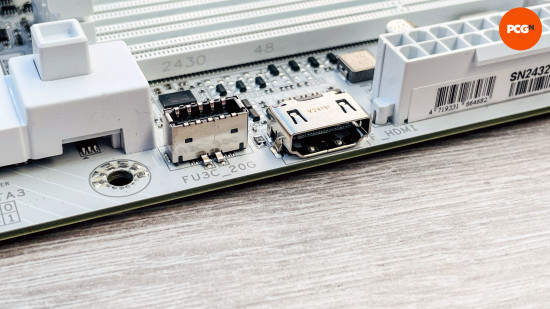
The headline features for X870 chipsets are wider support for USB 4.0. as well as PCIe 5.0 on both the primary PCIe 16x slot and at least one M.2 port. In fact, this board has three PCIe 5.0-capable M.2 ports, but it’s worth noting that the lower two PCIe 5.0-capable M.2 ports will steal PCIe lanes from your graphics card, so we suggest only using the first slot, while slot two is also available, but limited to PCIe 4.0 speeds. Still, two M.2 SSDs are likely to be enough for most of us.
You also get Wi-Fi 7, which is an upgrade on what you see on 600-series chipset boards, but the 2.5 Gbps Ethernet port isn’t any faster than we’ve seen for the last few generations. The audio, meanwhile, comes from Realtek’s ALC1220 codec, which again isn’t an upgrade on what you’d see on X670 boards, but is usually solid in terms of audio quality.
There are plenty of useful features for tweaking and cooling too. There are onboard power and reset buttons, an LED POST code display, and a BIOS Flashback button on the I/O panel too. In addition to eight 4-pin fan headers, there are two thermal probe inputs as well, which you can assign as fan speed inputs.
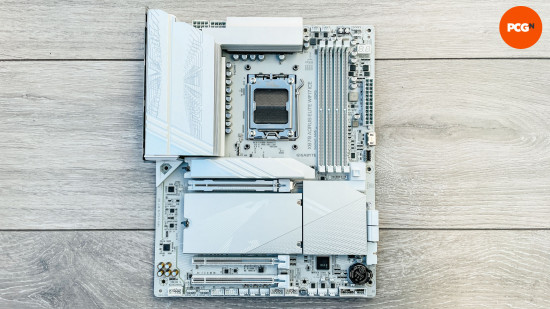
There aren’t as many USB-C on the I/O panel as you can find on some of the competition, but both Type-C ports are USB 4.0 and there’s a massive tally of ten USB-A ports as well, with a mixture of USB 2.0, 3.2 Gen 1 and 3.2 Gen 2 ports. Meanwhile, the front panel USB-C header is your standard USB 3.2 Gen 2×2 port (20Gbps), but next to it is an HDMI port. This is in addition to the one on the rear I/O panel and supports third-party 1080p 30Hz case screens that can be used to display animations or system information graphics inside your system.
Gigabyte has also applied the white theme to its updated BIOS, which is a nice touch, and the BIOS itself looks a lot cleaner than previous Gigabyte layouts. Likewise, Gigabyte’s motherboard control software has been simplified, and is now mostly limited to RGB lighting and fan control, with the latter offering excellent control over your PC’s cooling.
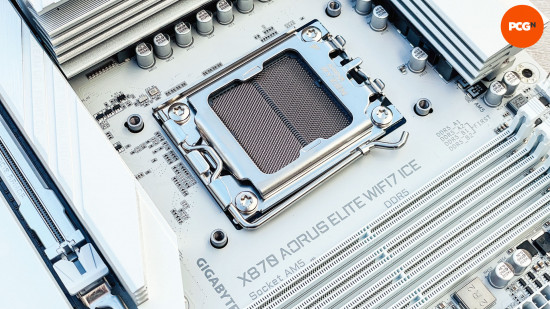
Design
Of course, the attractive color scheme is the main reason you’d buy the Gigabyte Aorus Elite X870 WiFi7 Ice. It sports a mixture of very light gray and white, and even the PCB joins the party, which is a rare move. If you’re planning to build a white-themed PC, then you’ll love the attention to detail here, as the color even extends to the fan headers, AMD socket cooler mounts, LED POST code display, and integrated I/O panel shield.
The layout is also mostly excellent, especially thanks to the PCIe EZ-Latch Plus button for your graphics card we mentioned earlier – it would be extremely difficult to remove your graphics card without this feature. Gigabyte has otherwise placed key ports and connectors at the edge of the PCB to aid cable tidying, but we do have one complaint, which is the location of six of the eight 4-pin fan headers.
These are all located on the bottom of the PCB, meaning that powering the roof or rear fans from a source other than the CPU headers may need extension cables. Thankfully there are both 4-pin and 3-pin RGB headers at the top of the board, with a further two 3-pin RGB headers at the base.
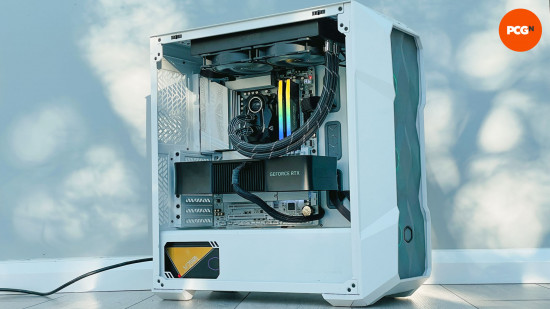
Benchmarks
The Gigabyte Aorus Elite X870 WiFi7 Ice recorded Cinebench R24 scores of 2,344 points in the multi-core test and 139 points in the single-core test, which are right on the money. Also, in our Total War: Warhammer 3 game test at 1080p, it managed a 1% low of 159fps and 209fps average using an Nvidia GeForce RTX 4080 Super graphics card.
The audio performance in Rightmark Audio Analyzer was decent too, as expected for a Realtek ALC1220 codec, with 102dBA dynamic range and -102dBA noise level measurements, both of which are decent results. We’ve seen higher, but this is better than you’d see from a budget board with an older ALC892 codec, for example. Meanwhile, the top M.2 slot handled our PCIe 5.0 SSD well, with a peak temperature of 61°C in our stress test, which is just as well as this is the only slot that supports PCIe 5.0 SSDs and doesn’t steal lanes from the graphics slot.
Likewise, the voltage regulator module (VRM) temperatures sat at a reasonable 55°C in both the software and using our thermal probe, while handling our Ryzen 9 9950X test CPU. Finally, the total system peak power consumption was 361W from the wall, which is in line with other Socket AM5 boards I’ve tested.
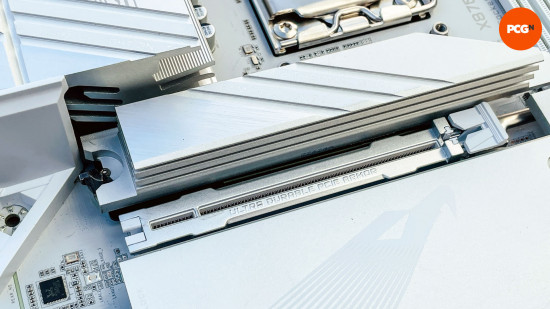
Price
The Gigabyte Aorus Elite X870 WiFi7 Ice price is $289, which represents good value compared to the competition and its predecessors, primarily thanks to Gigabyte’s obsession with creating a truly icy white motherboard. It offers added features over B650 models and, to a lesser extent, over X670 boards as well.
Clearly, if you’re on a tight budget, saving $100 or so is the way to go with a B650 motherboard. However, if you’re looking to build the white PC of your dreams, with a motherboard that has your back in terms of features and expansion, but still leaves you with change from $300, then the Aorus Elite X870 WiFi7 Ice offers a decent value for the price.
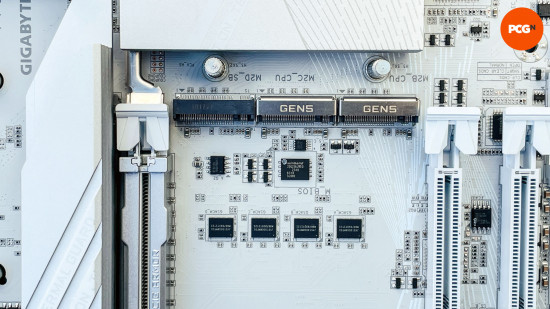
Verdict
The biggest problem motherboard manufacturers face when getting enthusiasts to buy X870 motherboards is that X670 and B650-based options generally offer identical performance with the latest AMD Ryzen 9000 CPUs. It’s only additional features and aesthetic tweaks that warrant spending more, but at $290, this is still a well-priced motherboard, even compared to the older B650 model of this board.
With the Aorus Elite X870 WiFi7 Ice you get a motherboard that adheres far more extensively to its white color scheme, has improved tool-free features, and includes Wi-Fi 7 as well as USB 4.0 Type-C ports, all of which add a touch of future-proofing to the equation too.
There are cheaper options when it comes to white X870 motherboards, but Gigabyte has nailed the attention to detail in ensuring practically every component on the PCB is either white, or close to it.
Combined with decent cooling for the best gaming SSDs and the VRMs, full PCIe 5.0 support, plenty of scope for controlling an extensive air or water-cooling system, as well as Wi-Fi 7, USB 4.0 plus decent BIOS and software, if you need a white motherboard for your AMD Ryzen 7000 or 9000 CPU, then we can thoroughly recommend the Gigabyte Aorus Elite X870 WiFi7 Ice.
If you’re looking to upgrade to one of the latest AMD CPUs with this board, then check out our Ryzen 7 9800X3D review, where we take the current best gaming CPU for a spin in our benchmark suite.
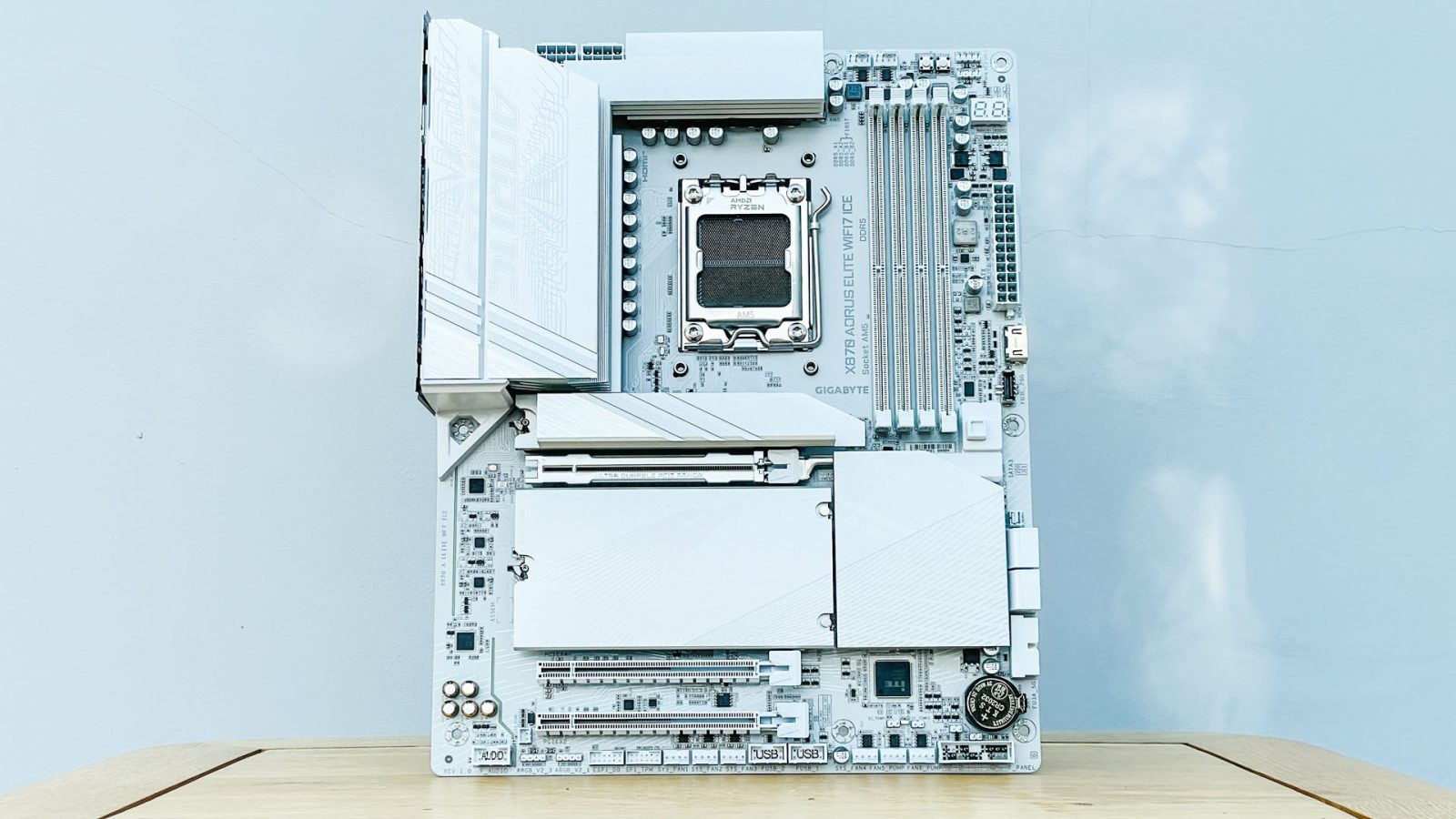
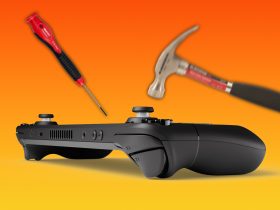
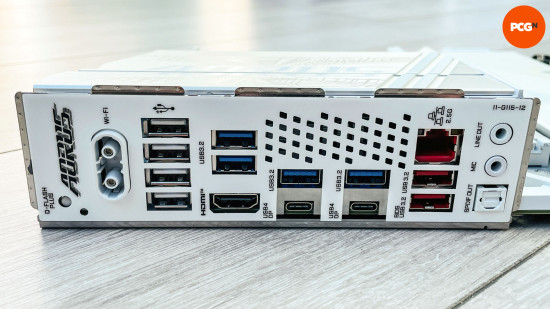




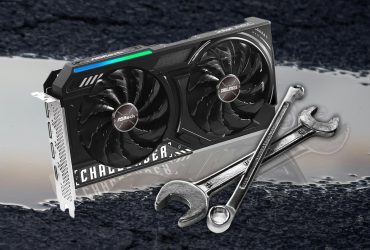

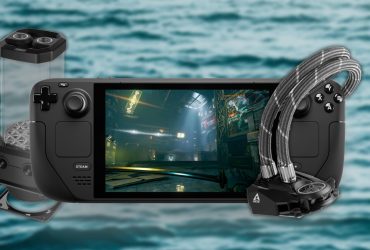
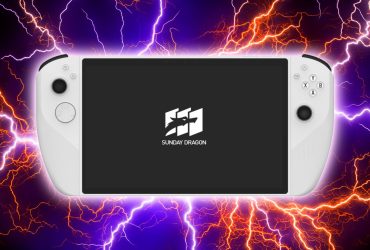
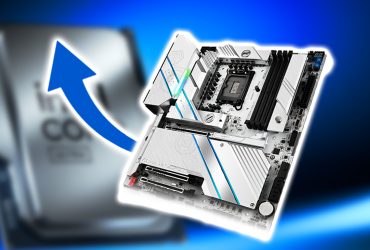
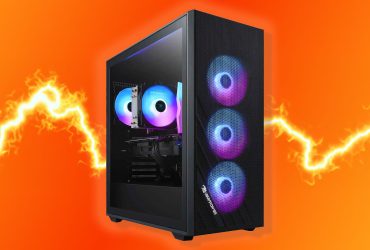
Leave a Reply